M33 - Triangulum Galaxy
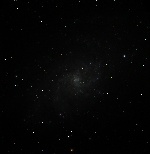 |
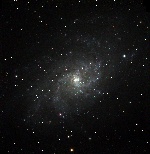 |
| Imax=12 | Imax=3 |
SBIG ST-4K, 1174s total exposure 9/20/17 Whisper Canyon, CA
This was our first attempt at a deeper exposure of M33 for Calstar 2017. The imaging had a good start, with better than average sharpness combined with a diagonal orientation that fits most of the peripheral features into the square field of view. However, after a few frames, the sky suddenly clouded over, and the night was finished.
NGC 7635 - Bubble Nebula
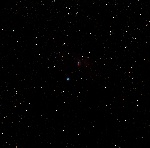 |
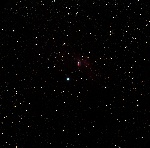 |
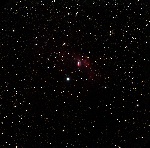 |
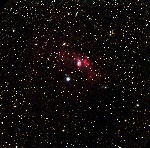 |
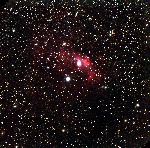 |
| Imax=20 | Imax=10 | Imax=5 | Imax=2 | Imax=1 |
SBIG ST-4K, 2700s total exposure 9/21/17 Whisper Canyon, CA
Emission nebula in Cassiopeia. The 'bubble' is thought to be created by stellar wind from a central star colliding with surrounding gas. Note also the red object near the central star. While it appears quite bright in photographs, I was not able to detect it visually.
NGC 147
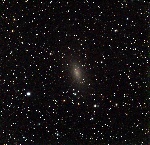 |
| Imax=1 |
SBIG ST-4K, 2700s total exposure 9/21/17 Whisper Canyon, CA
NGC 147 in Cassiopeia, at an estimated distance of 2.5 million light years, is a close companion of NGC 185 and also considered a satellite of Andromeda. It has a low surface brightness, and we could not see it visually.
NGC 185
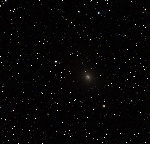 |
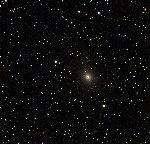 |
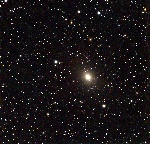 |
| Imax=4 | Imax=2 | Imax=1 |
SBIG ST-4K, 1800s total exposure 9/21/17 Whisper Canyon, CA
NGC 185 in Cassiopeia, at an estimated distance of 2.1 million light years, is a close companion of NGC 147 and is also considered a satellite of Andromeda.
M17 - Swan Nebula
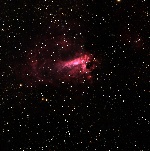 |
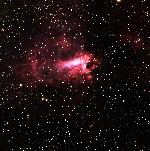 |
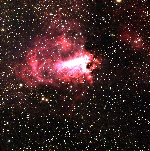 |
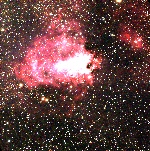 |
| Imax=10 | Imax=5 | Imax=2 | Imax=1 |
SBIG ST-4K, 900s total exposure 9/22/17 Whisper Canyon, CA
This is a new image of M17 taken with the ST-4K camera. Although the image is not quite as sharp as the previous image obtained with the Starshoot camera, it covers a much larger area and shows fainter features. The ST-4K camera also shows the hydrogen-alpha emission (red features) more brightly relative to dust (blue-white features).
M33 - Triangulum Galaxy
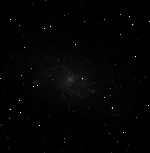 |
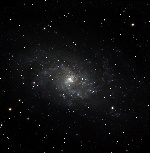 |
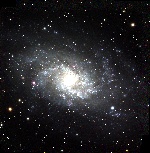 |
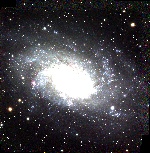 |
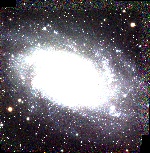 |
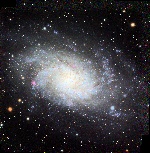 |
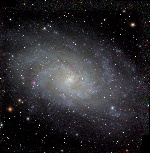 |
| Imax=12 | Imax=3 | Imax=1 | Imax=0.50 | Imax=0.25 | Nonlinear | Nonlinear |
SBIG ST-4K, 9300s total exposure 9/22/17 Whisper Canyon, CA
This was an attempt to get a deeper exposure of M33 (compared with 9/13/12) to see more of the interesting features around the periphery. After discarding a few frames with tracking problems, we ended up with 31 5-minute exposures. The image sharpness is similar to before. There are some regions around the edges that appear more grainy since they have less exposure. I chose not to crop them for increased coverage.
M42 - Orion Nebula
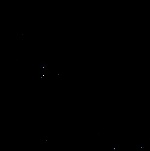 |
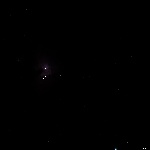 |
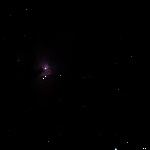 |
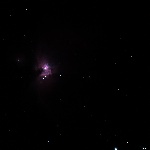 |
| Imax=16000 (1s) | Imax=2000 (5s) | Imax=1000 (5s) | Imax=500 (5s) |
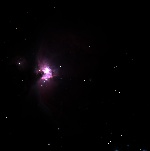 |
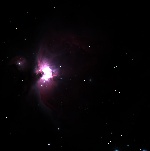 |
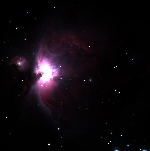 |
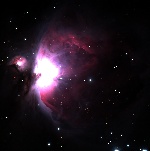 |
| Imax=200 | Imax=100 | Imax=50 | Imax=20 |
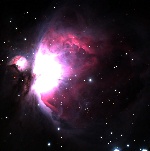 |
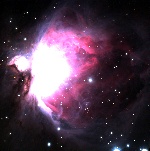 |
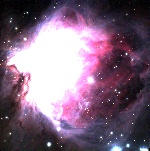 |
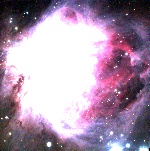 |
| Imax=10 | Imax=5 | Imax=2 | Imax=1 |
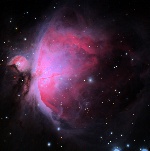 |
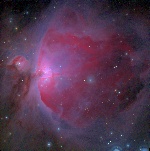 |
| Nonlinear | Nonlinear |
SBIG ST-4K, 1800s exposure at 300s, 9/22/17 Whisper Canyon, CA
Here was another attempt to capture the full range of features visible in the Orion Nebula. The scaled images above were made by combining 21 images with 1s exposure, 15 images with 5s exposure, or 6 images with 300s exposure, the last exposure happening as the sky was just starting to brighten before dawn. The first image shows the main stars, including the trapezium. In the next few images, which show the bright core of the nebula, a bright red shelf appears, with a dark protrusion in front of it (just above a bright star). I am not able to see this feature visually, perhaps because our eyes are not very sensitive to hydrogen-alpha emission, and we see mainly the oxygen-III emission, which appears blue with this camera. I think the images out to Imax=20 show roughly the extent of the nebula that can be seen visually. The third row maintains linear scaling, showing the fainter features at the periphery of the nebula, while saturating the center. The bottom row shows two nonlinear scaling methods, applied after replacing the saturated pixels from the 300s exposures with values taken from the 5s exposures. The image on the left used a histogram equalization method, and the image on the right used a logarithmic scaling. Both methods maintain the hue at each location, applying the nonlinear scaling to the intensity only. These methods drastically change the appearance, but allow textural features to be followed over the entire field of view.
IC4955
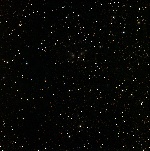 |
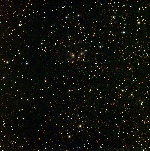 |
| Imax=5 | Imax=2 |
SBIG ST-4K, 900s total exposure 9/23/17 Whisper Canyon, CA
IC4955 is a small and faint reflection nebula in Vulpecula. In this image, it appears as two detached regions of faint nebulosity surrounding a few bright stars. The region on the right has a rather sharp light-dark boundary.
NGC 1893 / IC410
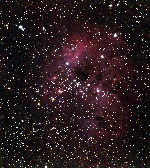 |
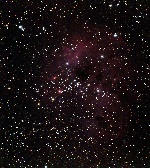 |
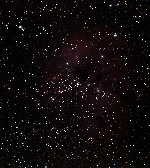 |
| Imax=1 | Imax=1.70 | Imax=3 |
SBIG ST-4K, 2400s total exposure 9/23/17 Whisper Canyon, CA
NGC 1893 is an open star cluster in Auriga, and the surrounding emission nebula is IC410. The image shows a large, diffuse emission nebula with apparent dark nebulae in front, and a pair of “streamers” pointing generally away from the center of the star cluster.
NGC 7331
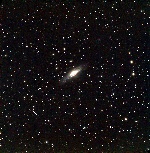 |
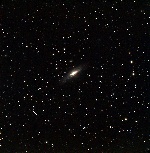 |
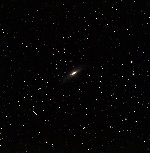 |
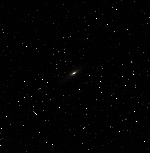 |
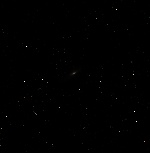 |
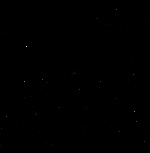 |
| Imax=1 | Imax=2 | Imax=4 | Imax=8 | Imax=32 | Imax=128 |
SBIG ST-4K, 1800s total exposure 9/23/17 Whisper Canyon, CA
NGC 7331 is a spiral galaxy in Pegasus, approximately 40 light-years from us. This was an attempt to get a deeper exposure compared with the previous Starshoot image. Based on the results, it appears that even more exposure time would have helped. Some of the images I have seen online of this galaxy are processed beyond recognition, but the HST images are quite impressive. This image also shows a multitude of more distant galaxies.